Routine care and grooming
Routine care
The eyes
Generally speaking, the eyes of a healthy cat do not require any special care. You just need to make sure they don't run, suppurate or inflamed. However, some breeds, especially those with a short face, require more regular care; when tears form a ring around the eye, excess tears should be removed and the median angle of the eye cleaned with a sterile compress soaked in an ocular antiseptic. If there is any discharge or redness, consult a vet immediately.
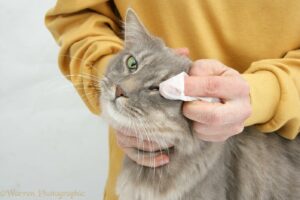
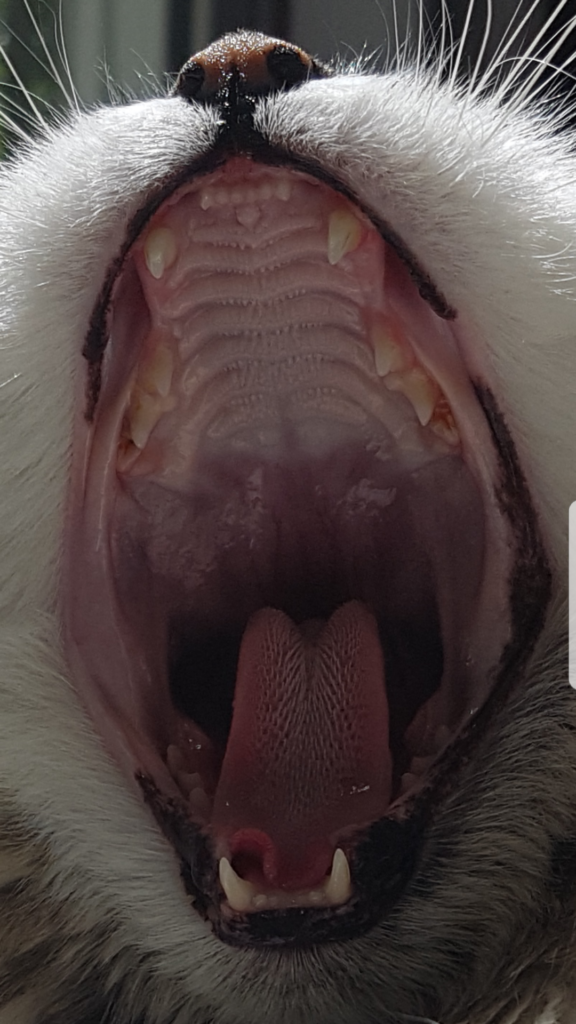
Mouth hygiene
It's important to remember that a cat's breath is always strong, due to its meat diet. This smell must be distinguished from halitosis (bad breath), which is due either to the activity of bacteria in the oral cavity or to the oral elimination of waste that should be eliminated via the natural emunctories, the kidneys in particular. The breath of a cat with uraemia is therefore easily recognisable. The accumulation of tartar and slowly decomposing food debris can cause damage to the teeth and gums.
gums. Tartar deposits - which can reach impressive proportions - result from the accumulation of mineral salts from saliva (calcium in particular) on dental plaque.
or contained in food debris. It should be noted that the teeth of cats fed on moist food are more susceptible to periodontal disease. Kibbles require longer chewing and have a slight abrasive effect on dental crowns. Certain compounds, known as calcium chelators, help to limit tartar formation and are incorporated into the formula of premium foods.
range.
Nose and ears
In most cases, the nose requires no special care. A healthy cat never blows its nose, and its nose is always moist: not only because it frequently runs its tongue over it, but also because its tears constantly flow out through the tear ducts. A dry or snotty nose should prompt veterinary attention. In some breeds (short-faced, for example) nasal secretions can form deposits or crusts in the corners of the nostrils, which can be removed with a cotton pad soaked in a special antiseptic lotion or boiled, cooled water.
As far as the ears are concerned, the basic rule is to touch them as little as possible. The base of the auricle is always a little greasy: this normal deposit of earwax can sometimes turn brown.
This deposit should not be removed too often, as this may increase earwax secretion. If the appearance is undesirable or the discharge is really abundant, you should consult a vet, who will prescribe the appropriate cleaning solutions and any necessary treatment.
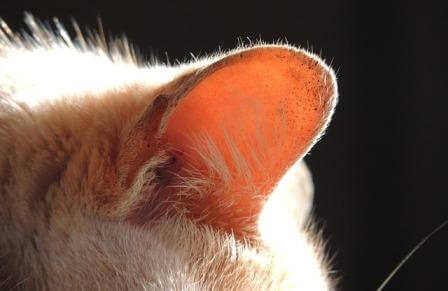
Fur care
The cat has a particularly dense coat (800 to 1600 hairs per cm2) compared with other species. The follicles are grouped into clusters of 10 to 20 hairs, comprising two or three primary hairs and numerous secondary hairs. Each primary follicle produces a relatively thick and long "top hair". This primary hair is framed by secondary hairs, which are finer, shorter and often lacking an arrector muscle or sebaceous glands, making up the undercoat.
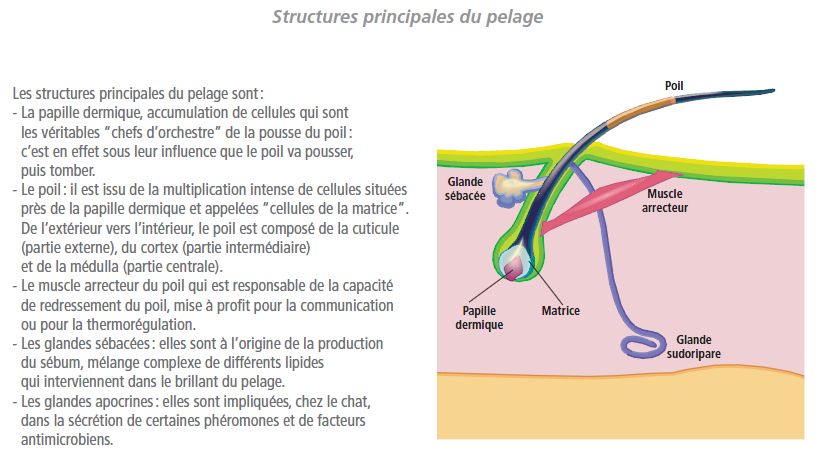
A cat's coat has many functions in addition to its aesthetic appearance. Its main role for the animal is to protect the skin and body, in terms of thermal insulation, combating dehydration and acting as a physical barrier against external agents (UV rays, shocks). Sebum, secreted by the sebaceous glands, is a gloss for the coat, but it also has a protective function against infectious agents.

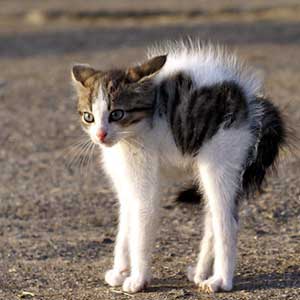
The coat also plays a communicative role. The bristling of the hair, via the arrector muscles, allows specific signals to be sent within or between species. As for grooming, whether individual or communal, it helps to maintain coat hygiene, regulate temperature and contribute to the establishment of a sense of well-being.
social relations between individuals.
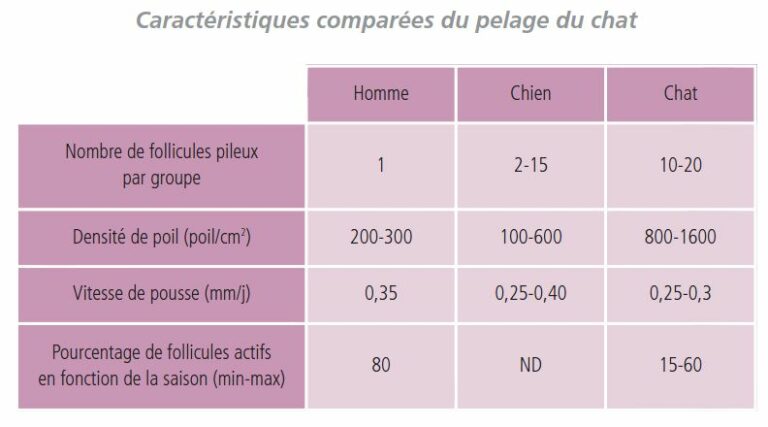
Hair renewal
Coat renewal in cats is both seasonal and gradual. The visible sign of coat renewal in cats is seasonal moulting. Under natural conditions, this moult is frank and allows the animal to adapt to climatic conditions. In the modern conditions in which cats live (i.e. in the presence of artificial light and a controlled temperature all year round), the phenomenon tends to be prolonged and more irregular, although there is always a seasonal peak.
At the height of winter, paradoxically, hair growth activity is low! This is followed by a period of intense activity lasting 2 to 4 months in spring, when hair growth averages 0.3 mm per day for an adult cat. This phase of renewed activity is characterised by increased hair loss: this is the moult. The old hair is in fact pushed out of its follicle by the new hair. Growth peaks at the end of the summer, at the beginning of September in the northern hemisphere, to prepare for the winter coat!
Cats have a very useful tool for maintaining their fur: their tongue. Sufficiently raspy, it removes dead hairs, tidies and aerates the coat. In addition, it's a good idea to comb your cat's coat to aerate it, remove dead hairs (so it doesn't swallow them) and the locks (or wads) that cause itchy, tight skin. Top-of-the-range dry foods offer a range of effective nutritional solutions to help eliminate hairballs.
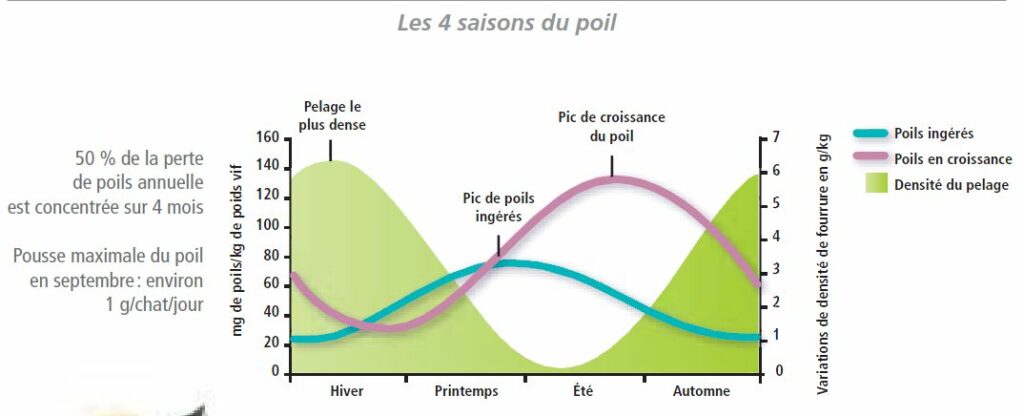
Source: Guide Pratique Elevage Félin - Elise Malandain, Susan Little, Grégory Casseleux, Lorraine Shelton, Pascale Pibot, Bernard-Marie Paragon
Interested in adopting a munchkin kitten?
Come and see if we have any kittens available at the moment.

